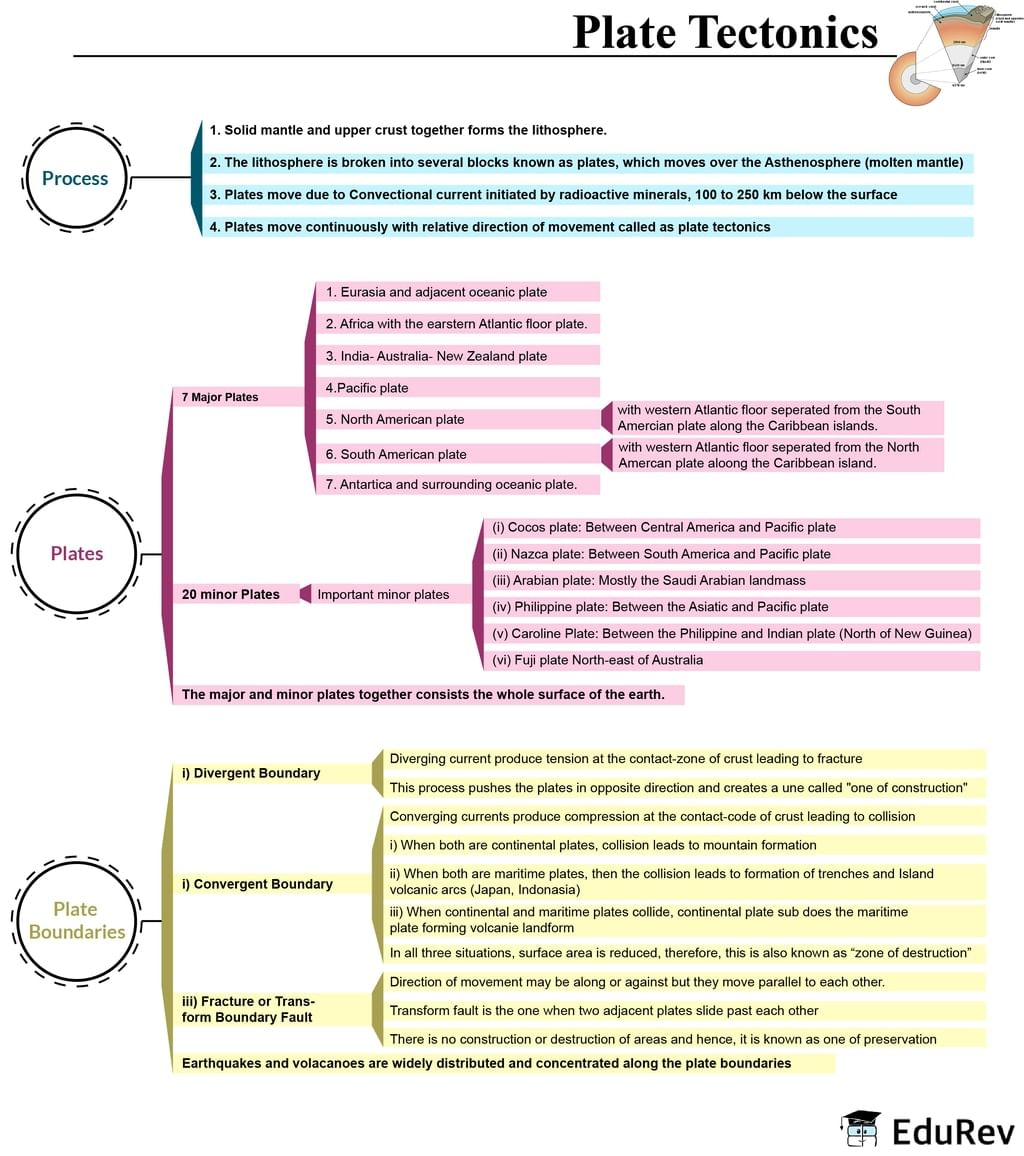UPSC Exam > UPSC Notes > Geography for UPSC CSE > Mind Map: Plate Tectonic
Mind Map: Plate Tectonic | Geography for UPSC CSE PDF Download

The document Mind Map: Plate Tectonic | Geography for UPSC CSE is a part of the UPSC Course Geography for UPSC CSE.
All you need of UPSC at this link: UPSC
|
175 videos|619 docs|192 tests
|
FAQs on Mind Map: Plate Tectonic - Geography for UPSC CSE
| 1. What are plate tectonics? |  |
Plate tectonics refers to the theory that Earth's outer shell, known as the lithosphere, is divided into several large and small plates that float on the semi-fluid asthenosphere. These plates are constantly moving and interact with each other at their boundaries, leading to various geological phenomena such as earthquakes, volcanic activity, and the formation of mountains.
| 2. How are earthquakes related to plate tectonics? |  |
Earthquakes are closely linked to plate tectonics as they primarily occur at plate boundaries. When two plates interact, they can either move away from each other (divergent boundary), collide (convergent boundary), or slide past each other (transform boundary). The intense pressure and friction that build up as the plates move can cause them to suddenly release energy in the form of seismic waves, resulting in an earthquake.
| 3. Can plate tectonics cause volcanic eruptions? |  |
Yes, plate tectonics play a major role in volcanic eruptions. Volcanoes are commonly found at convergent and divergent plate boundaries. At convergent boundaries, when an oceanic plate sinks beneath another plate (subduction), the intense heat and pressure cause the mantle to melt, leading to the formation of magma. This magma can rise to the surface and create volcanic eruptions. At divergent boundaries, magma from the asthenosphere can also reach the surface, causing volcanic activity.
| 4. What evidence supports the theory of plate tectonics? |  |
The theory of plate tectonics is supported by several lines of evidence. One key piece of evidence is the fit of the continents, known as the "jigsaw puzzle" fit. South America and Africa, for example, appear to fit together like puzzle pieces. Additionally, matching rock formations and fossils across continents further support the theory. Other evidence includes the distribution of earthquakes and volcanoes along plate boundaries, the magnetic stripes on the ocean floor, and the movement of GPS stations.
| 5. How does plate tectonics impact the Earth's surface? |  |
Plate tectonics significantly shapes the Earth's surface. It influences the formation of major landforms such as mountains, valleys, and oceanic trenches. For instance, when two continental plates collide, they can create towering mountain ranges like the Himalayas. Plate tectonics also affects the distribution of natural resources, as certain minerals and ores are concentrated in specific plate boundary environments. Furthermore, the movement of plates can cause significant geological hazards, including earthquakes, volcanic eruptions, and tsunamis.
Related Searches






















